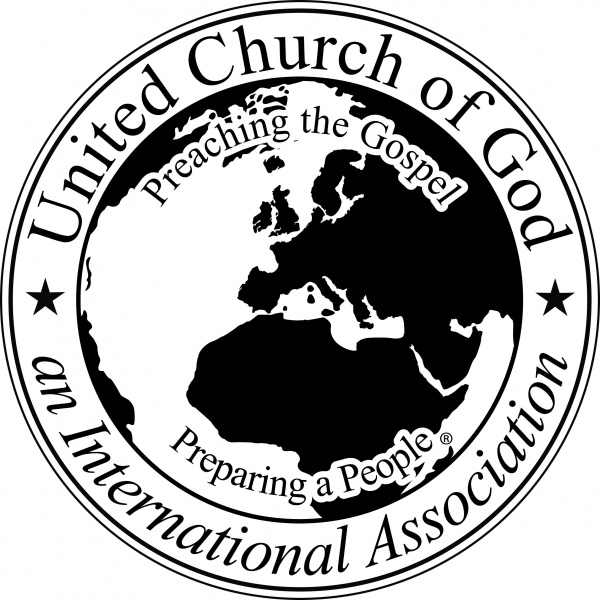Source: United Church of God. https://www.ucg.org/bible-study-tools/booklets/is-god-a-trinity/is-the-trinity-biblical

Many people assume that God the Father, Jesus Christ the Son, and the Holy Spirit form what is commonly known as the Trinity. The doctrine of the Trinity is usually summed up as a belief in one God existing in three distinct but equal persons.
But did you realize that, even though it is a common assumption among many sincere religious people, the word Trinity does not appear anywhere in the Bible? In fact, the word Trinity did not come into common use as a religious term until centuries after the last books of the Bible were completed—long after the apostles of Christ were gone from the scene!
Notice this admission in the New Bible Dictionary:“The term ‘Trinity’ is not itself found in the Bible. It was first used by Tertullian at the close of the 2nd century, but received wide currency [common use in intellectual discussion] and formal elucidation [clarification] only in the 4th and 5th centuries”(1996, “Trinity”).
That same source goes on to explain that “the formal doctrine of the Trinity was the result of several inadequate attempts to explain who and what the Christian God really is . . . To deal with these problems the Church Fathers met in [A.D.] 325 at the Council of Nicaea to set out an orthodox biblical definition concerning the divine identity.” However, it wasn’t until 381, “at the Council of Constantinople, [that] the divinity of the Spirit was affirmed” (ibid.).
We see, then, that the doctrine of the Trinity wasn’t formalized until long after the Bible was completed and the apostles were long dead in their graves. It took later theologians centuries to sort out what they believed and to formulate belief in the Trinity!
Why can’t theologians explain this doctrine?
By no means are theologians’ explanations of the Trinity doctrine clear. Religious writer A.W. Tozer, in his book The Knowledge of the Holy, states that the Trinity is an “incomprehensible mystery” and that attempts to understand it “must remain forever futile.” He admits that churches, “without pretending to understand,” have nevertheless continued to teach this doctrine (1961, pp. 17-18).
He then remarkably concludes, “The fact that it cannot be satisfactorily explained, instead of being against it, is in its favor” (p. 23).
The New Unger’s Bible Dictionary, in its article on the Trinity, concedes that the Trinitarian concept is humanly incomprehensible: “It is admitted by all who thoughtfully deal with this subject that the Scripture revelation here leads us into the presence of a deep mystery; and that all human attempts at expression are of necessity imperfect” (1988, p. 1308).
Cyril Richardson, professor of church history at New York’s Union Theological Seminary, though a dedicated Trinitarian himself, said this in his book The Doctrine of The Trinity:
“My conclusion, then, about the doctrine of the Trinity is that it is an artificial construct . . . It produces confusion rather than clarification; and while the problems with which it deals are real ones, the solutions it offers are not illuminating. It has posed for many Christians dark and mysterious statements, which are ultimately meaningless, because it does not sufficiently discriminate in its use of terms” (1958, pp. 148-149).
He also admitted, “Much of the defense of the Trinity as a ‘revealed’ doctrine, is really an evasion of the objections that can be brought against it” (p. 16).
A Dictionary of Religious Knowledge states regarding the Trinity, “Precisely what that doctrine is, or rather precisely how it is to be explained, Trinitarians are not agreed among themselves” (Lyman Abbott, editor, 1885, “Trinitarians”).
Why do even those who believe in the Trinity find it so difficult to explain?
The answer is simple yet shocking: It’s because the Bible does not teach it! One cannot prove or explain something from the Bible that is not biblical! The Bible is our only reliable source of divine revelation. And the truth, as we will see, is that the Trinity concept simply is not part of God’s revelation to humankind.
But don’t just take our word for it! Let’s see what some standard works of biblical scholarship and other individual scholars say.
Surprising admissions that the Trinity isn’t in the Bible!
Notice these admissions from a number of reputable sources and authors who, while themselves affirming the Trinity, acknowledge that the word “Trinity” and the doctrine is not found in the Bible.
The International Standard Bible Encyclopedia acknowledges that “‘trinity’ is a second-century term found nowhere in the Bible, and the Scriptures present no finished trinitarian statement” (1988, Vol. 4, “Trinity,” p. 914). It further states that “church fathers crystallized the doctrine in succeeding centuries”—long after the apostles had passed from the scene.
The HarperCollins Bible Dictionary tells us, “The formal doctrine of the Trinity as it was defined by the great church councils of the fourth and fifth centuries is not to be found in the NT [New Testament]” (Paul Achtemeier, editor, 1996, “Trinity”).
The HarperCollins Encyclopedia of Catholicism states: “Today, however, scholars generally agree that there is no doctrine of the Trinity as such in either the OT [Old Testament] or the NT [New Testament] . . . It would go far beyond the intention and thought-forms of the OT to suppose that a late-fourth-century or thirteenth-century Christian doctrine can be found there . . . Likewise, the NT does not contain an explicit doctrine of the Trinity” (Richard McBrien, general editor, 1995, “God,” pp. 564-565).
The New Encyclopaedia Britannica, in its article on the Trinity, explains: “Neither the word Trinity nor the explicit doctrine appears in the New Testament . . . The doctrine developed gradually over several centuries and through many controversies . . . It was not until the 4th century that the distinctness of the three and their unity were brought together in a single orthodox doctrine of one essence and three persons” (1985 edition, Micropaedia, Vol. 11, p. 928).
The New International Dictionary of New Testament Theology points out that “primitive Christianity did not have an explicit doctrine of the Trinity such as was subsequently elaborated in the creeds of the early church” (Colin Brown, editor, Vol. 2, 1976, “God,” p. 84).
Historian and science fiction writer H.G. Wells, in his noted work The Outline of History, points out, “There is no evidence that the apostles of Jesus ever heard of the trinity—at any rate from him” (1920, Vol. 2, p. 499).
Martin Luther, the German priest who initiated the Protestant Reformation, conceded, “It is indeed true that the name ‘Trinity’ is nowhere to be found in the Holy Scriptures, but has been conceived and invented by man” (reproduced in The Sermons of Martin Luther, John Lenker, editor, Vol. 3, 1988, p. 406).
The Oxford Companion to the Bible states: “Because the Trinity is such an important part of later Christian doctrine, it is striking that the term does not appear in the New Testament. Likewise, the developed concept of three coequal partners in the Godhead found in later creedal formulations cannot be clearly detected within the confines of the canon [i.e., actual Scripture]” (Bruce Metzger and Michael Coogan, editors, 1993, “Trinity,” p. 782).
Professor Charles Ryrie, in his respected work Basic Theology, writes: “Many doctrines are accepted by evangelicals as being clearly taught in the Scripture for which there are no proof texts. The doctrine of the Trinity furnishes the best example of this. It is fair to say that the Bible does not clearly teach the doctrine of the Trinity . . . In fact, there is not even one proof text, if by proof text we mean a verse or passage that ‘clearly’ states that there is one God who exists in three persons” (1999, p. 89).
Ryrie goes on to state: “The above illustrations prove the fallacy of concluding that if something is not proof texted in the Bible we cannot clearly teach the results . . . If that were so, I could never teach the doctrine of the Trinity” (p. 90).
Millard Erickson, research professor of theology at Southwestern Baptist Theological Seminary, writes that the Trinity “is not clearly or explicitly taught anywhere in Scripture, yet it is widely regarded as a central doctrine, indispensable to the Christian faith. In this regard, it goes contrary to what is virtually an axiom of biblical doctrine, namely, that there is a direct correlation between the scriptural clarity of a doctrine and its cruciality to the faith and life of the church.
“In view of the difficulty of the subject and the great amount of effort expended to maintain this doctrine, we may well ask ourselves what might justify all this trouble” (God in Three Persons: A Contemporary Interpretation of the Trinity, 1995,p. 12).
Professor Erickson further states that the Trinity teaching “is not present in biblical thought, but arose when biblical thought was pressed into this foreign mold [of Greek concepts]. Thus, the doctrine of the Trinity goes beyond and even distorts what the Bible says about God” (p. 20).
Professor Erickson later points out: “It is claimed that the doctrine of the Trinity is a very important, crucial, and even basic doctrine. If that is indeed the case, should it not be somewhere more clearly, directly, and explicitly stated in the Bible? If this is the doctrine that especially constitutes Christianity’s uniqueness . . . how can it be only implied in the biblical revelation? . . . For here is a seemingly crucial matter where the Scriptures do not speak loudly and clearly.
“Little direct response can be made to this charge. It is unlikely that any text of Scripture can be shown to teach the doctrine of the Trinity in a clear, direct, and unmistakable fashion” (pp. 108-109). Later in this booklet we will consider various scriptures often used to support the Trinity doctrine.
Shirley Guthrie, Jr., professor of theology at Columbia Theological Seminary, writes: “The Bible does not teach the doctrine of the Trinity. Neither the word ‘trinity’ itself nor such language as ‘one-in-three,’ ‘three-in-one,’ one ‘essence’ (or ‘substance’), and three ‘persons,’ is biblical language. The language of the doctrine is the language of the ancient church taken from classical Greek philosophy” (Christian Doctrine, 1994, pp. 76-77).”
The background for how the Trinity was introduced
Since the Trinity is not found in the Bible, as so many scholars and theologians admit, how did it come to be viewed as such an important teaching?
Theology professors Roger Olson and Christopher Hall explain part of the puzzle in their book The Trinity: “It is understandable that the importance placed on this doctrine is perplexing to many lay Christians and students. Nowhere is it clearly and unequivocally stated in Scripture . . . How can it be so important if it is not explicitly stated in Scripture? . . .
“The doctrine of the Trinity developed gradually after the completion of the New Testament in the heat of controversy, but the church fathers who developed it believed they were simply exegeting [explaining] divine revelation and not at all speculating or inventing new ideas. The full-blown doctrine of the Trinity was spelled out in the fourth century at two great ecumenical (universal) councils: Nicea (325 A.D.) and Constantinople (381 A.D.)” (2002, pp. 1-2).
We see from this and other sources quoted above that the idea of a Trinity was foreign to the biblical writers. Instead, as many of these sources openly acknowledge, the doctrine of the Trinity developed considerably later and over a span of several centuries.
To understand the factors that led to the introduction of this belief, we must first go back to see far-reaching and little-understood trends that started in the first few decades of the early Church. It’s a surprising—and in many ways shocking—story!







